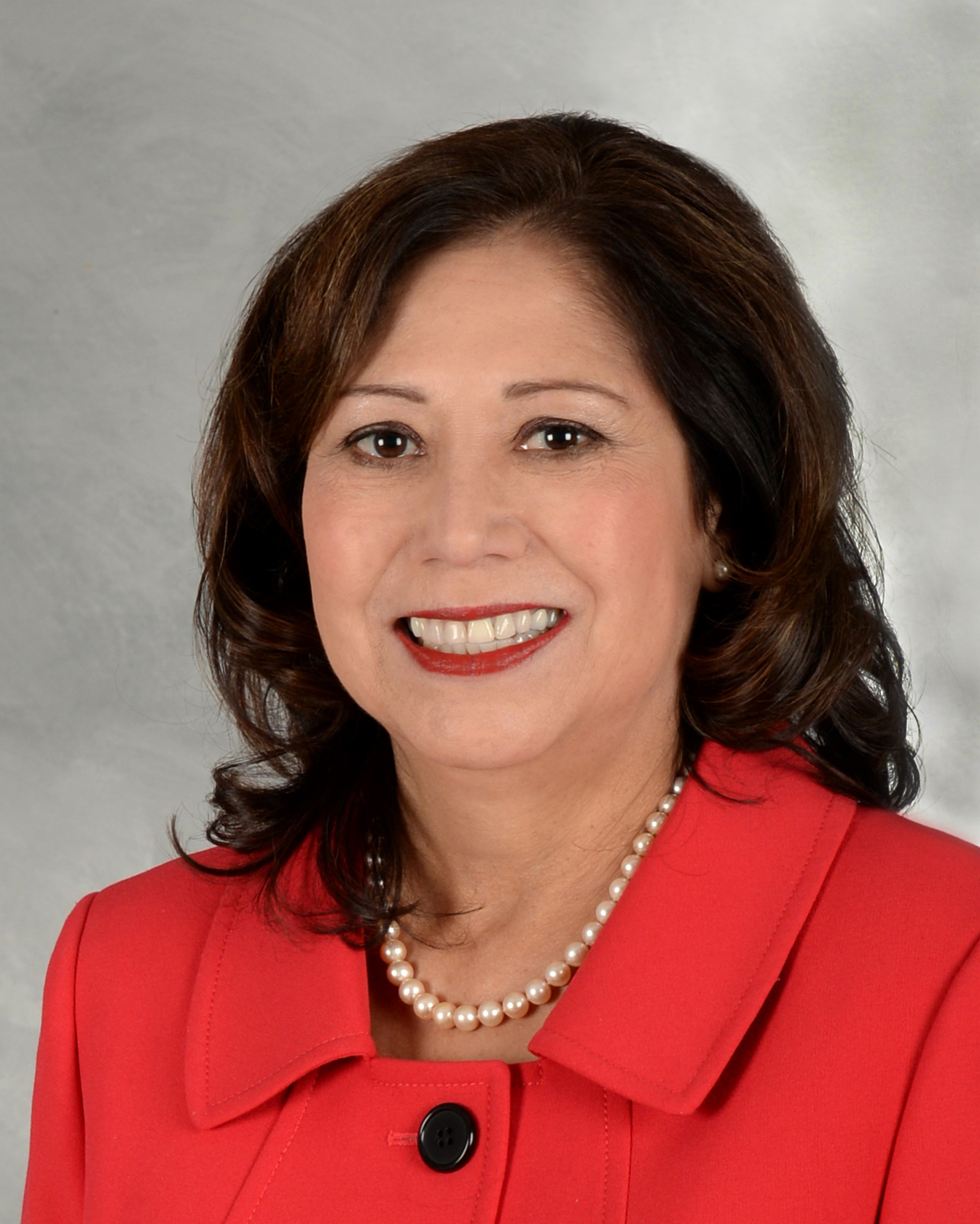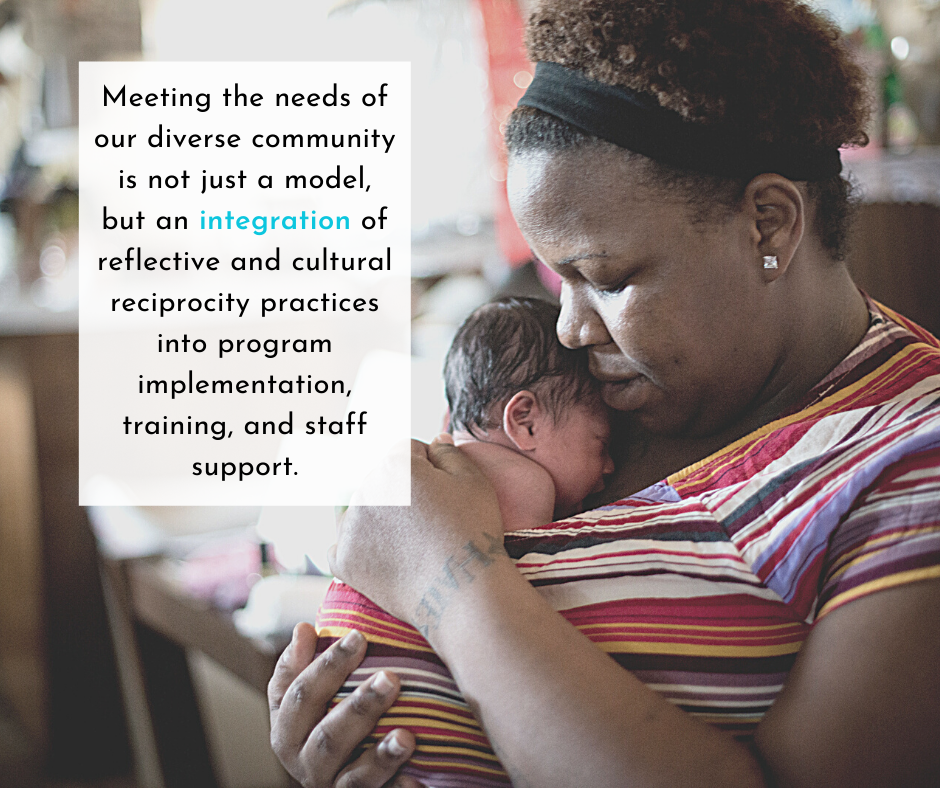April 28, 2022
With a flourish of signatures, the Los Angeles County Board of Supervisors proclaimed April 8 as Home Visiting Day. The act cemented the county’s state and national leadership in programs shown to reduce child abuse, improve school readiness and strengthen families.
Approved by the Board during their April 5 meeting, the proclamation highlights First 5 LA’s major role in launching, promoting and expanding home visiting. The agency provided critical seed funding during the early years, which helped Los Angeles County develop the largest network of home visiting programs in the nation. Today, as a result of the county’s expansion of home visiting programs under Parents as Teachers and Healthy Families America, as well as the increase in state funds available for home visiting, the L.A. Department of Public Health now holds the title of biggest county funder, administering over $40 million in different funding streams for home visiting from both state and county dollars. First 5 LA remains the second-largest funder of home visiting in Los Angeles.
“We’re so proud to have the largest home visiting initiative in the country,” said Jana Wright, coordinator of the Los Angeles County Perinatal and Early Childhood Home Visitation Consortium and director of policy at LA Best Babies Network. “Home visiting is kind of the best-kept secret out there for family and child support, but we’re hoping Home Visiting Day changes that. Everyone needs to know how helpful it is and how to find it.”
That was the goal of the proclamation’s author, Supervisor Hilda L. Solis, who has been a big champion of expanding home visiting in L.A. County.
 “The purpose of this proclamation is to bring awareness to the benefits associated with home visiting, such as reduced family stress, improved family mental health, strengthened parent-infant attachment, improved child development, reduced child abuse, and connections to community resources that help parents have healthy births and give their children the best start,” Solis said.
“The purpose of this proclamation is to bring awareness to the benefits associated with home visiting, such as reduced family stress, improved family mental health, strengthened parent-infant attachment, improved child development, reduced child abuse, and connections to community resources that help parents have healthy births and give their children the best start,” Solis said.
Home visiting is a free and voluntary program that provides families with a trusted and trained professional who meets families where they are –– whether it’s through regular home visits or connecting virtually –– to offer information and support about child-rearing, as well as referrals to other programs the family may benefit from, such as food aid, charitable services, parent support groups, mental and health care services, lactation support and more.
First 5 LA funds nearly half of the home visiting programs in L.A. County, reaching some 25,000 families a year. Funded programs include Welcome Baby, a “light-touch” program that can begin prenatally and lasts up to nine months for the infant, and the more intensive Healthy Families America and Parents as Teachers programs that may last three to five years. Other models available in L.A. County include Nurse-Family Partnership, Early Head Start, MAMA’s Neighborhood, and Partnerships for Families.
“I worried less. They explained so many things: what the baby should be eating, how they should be developing, how to breastfeed. “They showed me how to value myself, not to fall into depression, how to be there for my children.” – Valeria Elias Toledo, Welcome Baby Participant
Home visitors also taught her intangible skills. “They showed me how to value myself, not to fall into depression, how to be there for my children,” Valeria reflected.
“We have a solar system of models to meet different families’ needs,” said Diana Careaga, director of First 5 LA’s Family Support team.
Compton resident Valeria Elias Toledo said she has used Welcome Baby for each of her three children — ages 5, 15 months and 5 months — and has recommended it to friends and relatives. Since she doesn’t have family nearby to help and guide her, the program has proven extremely helpful, especially when one baby needed a helmet to correct his skull shape.
“I worried less,” she said, in reference to the support she was able to receive from the home visitors. “They explained so many things: what the baby should be eating, how they should be developing, how to breastfeed.”
Home visitors also taught her intangible skills. “They showed me how to value myself, not to fall into depression, how to be there for my children,” Valeria reflected.

Home visiting was introduced in Los Angeles County in 1997 when the L.A. Department of Public Health sponsored a Nurse-Family Partnership pilot program, which still exists today. Four years later, First 5 LA recognized the effectiveness of home visiting as an evidence-based strategy that could help children in L.A. County enter kindergarten ready to succeed in school and life. The agency started funding home visiting services at several community organizations.
Those efforts were soon followed by the launch of First 5 LA’s own home visiting pilot program, Welcome Baby, at the California Hospital Medical Center in 2009. Buoyed by the initial success of that venture, First 5 LA partnered with 13 more hospitals in 2013 to offer similar home visiting services. A year later, the agency launched its more intensive models. The programs’ positive outcomes led the L.A. County Board of Supervisors to pass a motion in 2016 to have all child and family-serving county departments collaborate to expand home visiting.
First 5 LA’s efforts inspired other First 5s throughout California to implement home visiting programs in their own counties. As home visiting programs spread, they caught state health authorities’ attention. In 2018, $26.7 million was allocated in the state budget to add home visiting as a service to recipients of CalWORKs, a cash-aid program for families. In the state’s 2022-2023 proposed budget, $50 million was allocated for home visiting expansion.
Home visiting also receives support from the federal government, which established the Maternal, Infant, and Early Childhood Home Visiting (MIECHV) program in 2010. The program was reauthorized in 2018 with a $400 million annual budget; however, the program will expire on September 30. As a member of the National Home Visiting Coalition, First 5 LA is requesting MIECHV be reauthorized and funding increased by $200 million annually over the next five years. The additional funding would serve to lower high turnover rates among home visitors by increasing their wages; double the reach in Native American communities; and continue virtual visits as an option within home visiting models that many families find more convenient.

Locally, advocates aim to increase overall enrollment, particularly of Black families, who comprise about 12 percent of L.A. County’s home visiting clients. Advocates say more community outreach and education about the role of a home visitor and the benefits trained professionals provide are key. Many people mistakenly see a home visitor as a type of social worker who will report about the family to governmental agencies.
“We have to educate families on the true purpose of the services we provide,” said First 5 LA Program Officer Laura Kainsinger, who represents the agency at the Consortium. In addition to gathering the county’s home visiting providers to share best practices and discuss solutions to common issues, the Consortium seeks to elevate parent voices in the programs and reduce disparities in health outcomes and healthcare access, she noted.
Advocates hope that the Home Visiting Day proclamation will help raise awareness about this important family resource. In conjunction with the proclamation, the Consortium carried out a social media campaign — #HVDayLA — which featured a webinar on the benefits of home visiting to families.
First 5 LA is also pursuing nontraditional alliances to increase home visiting’s reach. In January, Blue Shield of California Promise Health, a managed care plan, awarded First 5 LA $420,000 to offer home visiting services to its patients — the first partnership of its kind.
Home visiting has come a long way in its 25-year journey in L.A. County, and advocates take pride in the official recognition of their efforts.
“It’s taken a lot of time, relationship-building and work,” Careaga said. “And we are proud of the many partnerships and network of providers across the county.”









